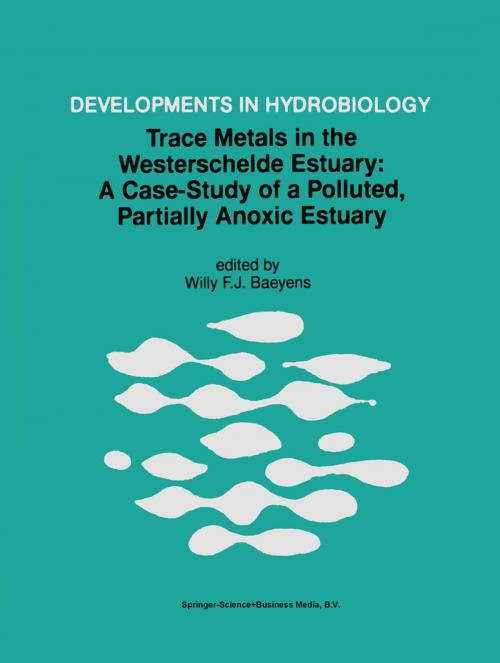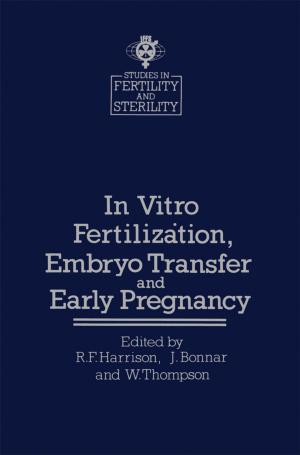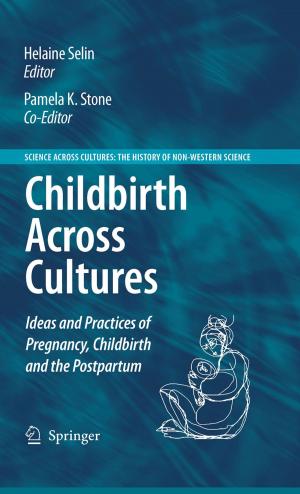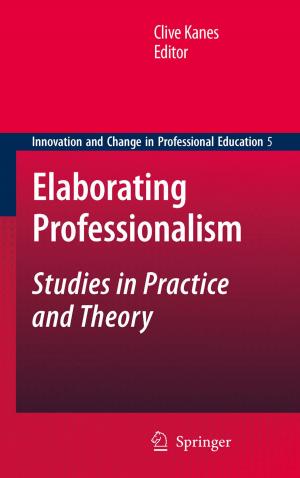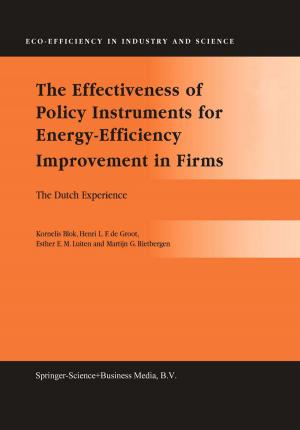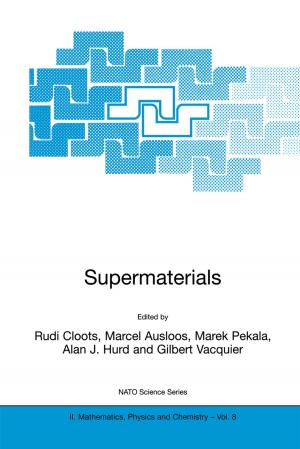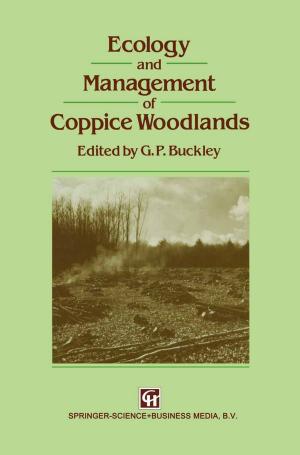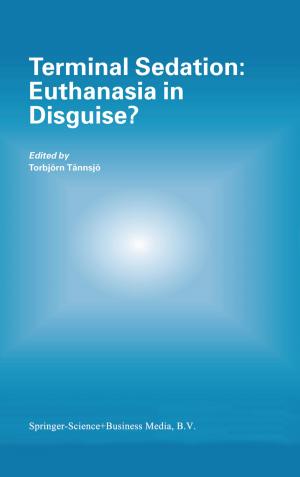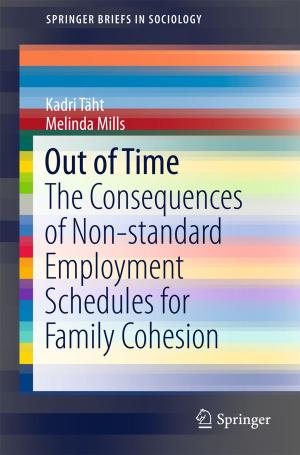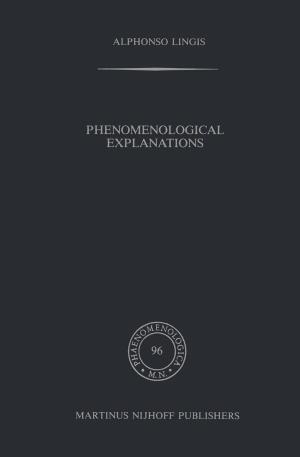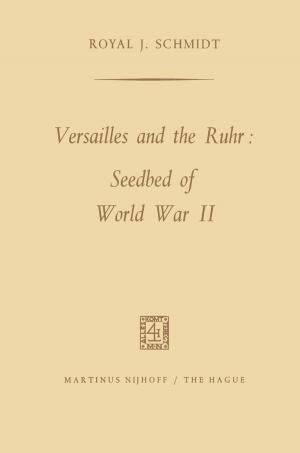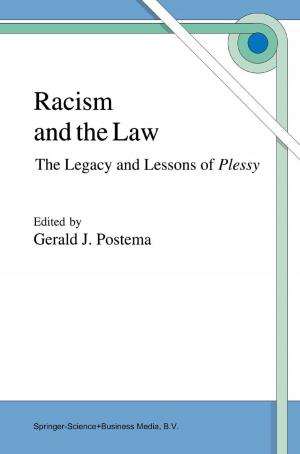Trace Metals in the Westerschelde Estuary: A Case-Study of a Polluted, Partially Anoxic Estuary
Nonfiction, Science & Nature, Science, Earth Sciences, Biological Sciences, Ecology| Author: | ISBN: | 9789401735735 | |
| Publisher: | Springer Netherlands | Publication: | April 17, 2013 |
| Imprint: | Springer | Language: | English |
| Author: | |
| ISBN: | 9789401735735 |
| Publisher: | Springer Netherlands |
| Publication: | April 17, 2013 |
| Imprint: | Springer |
| Language: | English |
Oceans and lakes are characterized by large residence times and can thus be considered as being in an equilibrium or quasi-equilibrium state. In contrast, estuaries, which constitute the interface between the fresh water and marine ecosystems, are biogeochemically and physically very dynamic. Strong gradients in physical and chemical variables such as temperature, pH, salinity, dissolved oxygen, nutrients, amount and composition of particulates result from the mixing of fresh water and saline end members. These gradients provoke increased biogeochemical processes, generally resulting in a geochemical filter (the area of high turbidity, showing enhanced adsorption-desorption processes) and a biological filter (the area of high plankton activity showing, besides a high uptake of nutrients, a high accumulation of trace metals). Both filters disturb the conservative mixing pattern of the trace metals in an estuary.
In addition, four aspects make the Scheldt estuary very unusual and different from other estuaries:
- the Scheldt is a tide-governed estuary which means larger residence times;
- the upper estuary receives large inputs of biodegradable organic matter which leads to oxygen depletion in winter and to anoxic conditions in summer;
- inputs of toxic pollutants occur in the upper estuary by the industrial park of Antwerp;
- the anoxic zone, the zone of pollutant input and the zone of the turbidity maximum coincide geographically.
The Scheldt estuary is thus an ideal field laboratory for the study of biogeochemical processes which do not occur elsewhere, or only partially, to a very low extent or in a specific compartment, i.e. the sediments. More specifically, redox processes involving trace metals, the formation of non-labile metal complexes, and the methylation of mercury occur as a result of anoxic conditions and the high load of organic matter. Several models describing in detail the transport, the sedimentation and the speciation of the trace metals in this well-mixed estuary (all major estuaries in EC countries adjacent to the North Sea or the Atlantic Ocean are well-mixed) are presented in this book. A comparison of the metal concentrations over a 15-year period shows a net reduction of the pollution level.
Oceans and lakes are characterized by large residence times and can thus be considered as being in an equilibrium or quasi-equilibrium state. In contrast, estuaries, which constitute the interface between the fresh water and marine ecosystems, are biogeochemically and physically very dynamic. Strong gradients in physical and chemical variables such as temperature, pH, salinity, dissolved oxygen, nutrients, amount and composition of particulates result from the mixing of fresh water and saline end members. These gradients provoke increased biogeochemical processes, generally resulting in a geochemical filter (the area of high turbidity, showing enhanced adsorption-desorption processes) and a biological filter (the area of high plankton activity showing, besides a high uptake of nutrients, a high accumulation of trace metals). Both filters disturb the conservative mixing pattern of the trace metals in an estuary.
In addition, four aspects make the Scheldt estuary very unusual and different from other estuaries:
- the Scheldt is a tide-governed estuary which means larger residence times;
- the upper estuary receives large inputs of biodegradable organic matter which leads to oxygen depletion in winter and to anoxic conditions in summer;
- inputs of toxic pollutants occur in the upper estuary by the industrial park of Antwerp;
- the anoxic zone, the zone of pollutant input and the zone of the turbidity maximum coincide geographically.
The Scheldt estuary is thus an ideal field laboratory for the study of biogeochemical processes which do not occur elsewhere, or only partially, to a very low extent or in a specific compartment, i.e. the sediments. More specifically, redox processes involving trace metals, the formation of non-labile metal complexes, and the methylation of mercury occur as a result of anoxic conditions and the high load of organic matter. Several models describing in detail the transport, the sedimentation and the speciation of the trace metals in this well-mixed estuary (all major estuaries in EC countries adjacent to the North Sea or the Atlantic Ocean are well-mixed) are presented in this book. A comparison of the metal concentrations over a 15-year period shows a net reduction of the pollution level.
